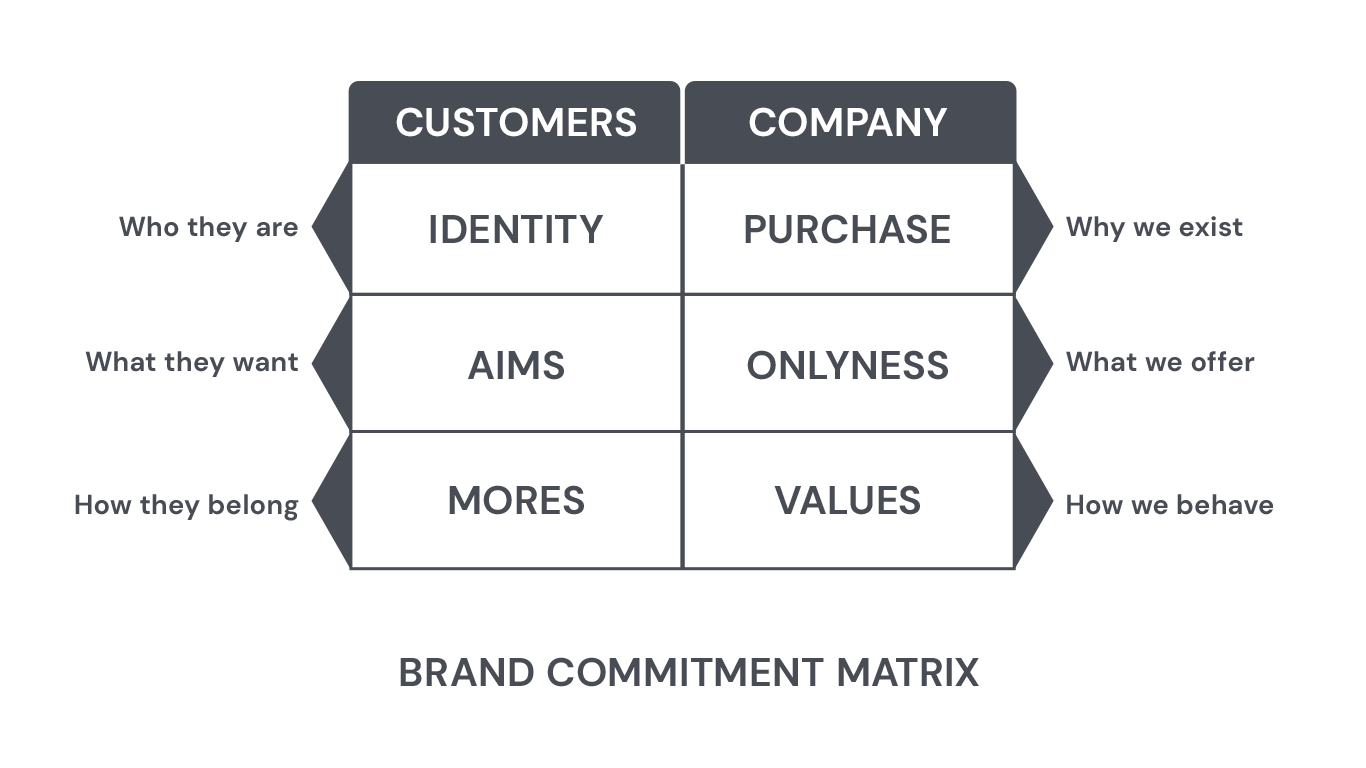Do your customers give a damn about your values?
You’ve uncovered and polished the values driving your business and employees. Now the question becomes: do your customers care about the same things? At this point in your brand strategy, it’s necessary to take a closer look at your existing audience(s) and determine if what you believe to be important carries the same weight in their minds. Do they live by the same set of values?
If you’re able, this is a good time to bring in focus groups or conduct other forms of research that give your customers an opportunity to either confirm your values or show areas of misalignment. Rather than try to reinvent your values to fit their needs, consider other groups of people who might believe in them. The Brand Commitment Matrix below is often used as an exercise to help leaders link their brand to an audience in a meaningful way. This is also a tool used in rebranding to help determine new opportunities for expanding or shifting a brand’s customer base. When you create a connection at this level, your brand has a better chance of building trust and a long-term relationship with the consumers who will be excited to tell others about you and what you stand for.
A few examples of brands who have harnessed the power of their values to attract employees and customers alike include Ben & Jerry’s and Patagonia. While you immediately think of ice cream when you hear “Ben & Jerry’s” the brand remains focused on a bigger picture. The company’s values are centered on: “advancing human rights and dignity, supporting social and economic justice for historically marginalized communities, and protecting and restoring the Earth’s natural systems”. While the company produces incredibly good ice cream, their actions are driven by bigger, more meaningful ideals. The company provides grant funding to support these values, empower employees to choose where these dollars are spent, and they’re actively working toward minimizing the company’s carbon footprint.
Patagonia is possibly a more visible example of values at work. The brand was built on a love for the outdoors and minimalist lifestyle. This has translated into decisions such as recycled fashion, funding projects that support environmental challenges, and more. It’s nearly impossible to see a Patagonia product without immediately thinking about their work in protecting the planet.
Ben & Jerry’s Values
Written more as categories rather than conversational statements, the brand supports each of these with more elaborate definitions and examples on the website and in marketing. While writing values in this way can add an extra step to link meaning between the brand and consumers, the company’s history and commitment to these beliefs eliminates that concern.
• Human Rights & Dignity
• Social & Economic Justice
• Environmental Protection, Restoration and Regeneration
Patagonia’s Values
Its values are written to reflect the brand’s personality and more directly tie into what customers believe in. This method is ideal for newer companies because it has a human, easily relatable feel.
• Build the best product
• Cause no unnecessary harm
• Use business to protect nature
• Not bound by convention
What matters is that companies stay true to their values and find audiences that fit naturally into this space versus trying to force values that aren’t currently true to who you are in an effort to gain a certain customer. Saying you are something you aren’t will hurt your brand in the long run.
At pivotal moments, rebranding is the most effective way for leaders to signal significant change. Are you at a pivotal moment? Drop us a line, and we'll be in touch.


